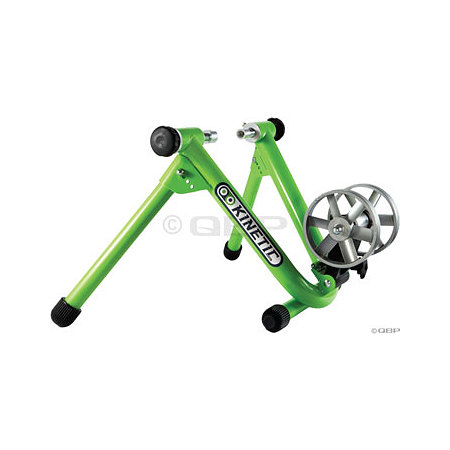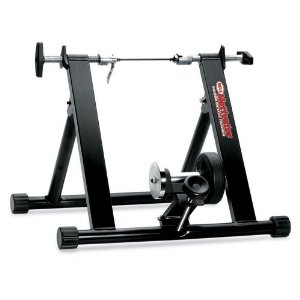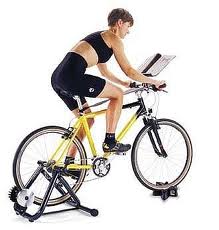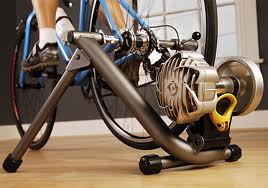In the world of weight loss and maintenance there arent very many adversaries as powerful as a dark, cold winter
coupled with rich holiday foods. Combine the feasts of Thanksgiving and Christmas with being unable to get outside due to inclement weather and youre looking at a recipe for weight gain.Ill let someone else deal with the good diet part of the equation; Im here to share a piece of exercise equipment that I use each winter to keep my fitness level up.
The main horse in my exercise stable is an indoor bike trainer.
Bike Trainers Are Convenient And Efficient
Right off the bat, let me point out that a bike trainer allows your bicycle to multi-task. When you hook your bike to an indoor trainer, there is no need to add a stair stepper, or a treadmill to your already cluttered exercise room. Your bike now keeps you in shape both indoors and outdoors.
Choose The Best Type Of Trainer
There are three basic types of trainers to choose from. They are wind trainers, mag trainers, and fluid trainers.

1). Wind trainers are simply devices that spin an impeller through the air. Because of their simplicity they have dual advantagesthey cost the least of the trainer types and they are the least likely to need repair.
But they also have a couple of disadvantages as well. Theres no getting around the fact that they are the noisiest of the three styles.
In addition to that, theyre the weakest; they arent able to generate enough resistance for some of the more rigorous workouts.
Cindy has written an excellent article on the merits of interval training for weight loss. The basic tenet of the article is that short repetitions of high intensity exercise can be unparalleled in their ability to make good use of exercise time for a busy woman.
But thats where a wind trainer may be ineffective. They just dont generate the workload for high intensity workouts.
Instead, they are appropriate for mild to moderate intensity, 'steady state' sessions.

2). Mag (magnetic) trainers fit somewhere between wind trainers and fluid trainers.
Mag trainers arent as noisy as wind trainers, but they do raise more of a racket than do fluid trainers.
They can generate enough resistance to make interval workouts possible, especially when youre speaking about some of the more advanced mag trainers like the CycleOps Magneto.
 The workload on most mag trainers can be altered to accommodate the varying demands of different workouts. The adjustments on the most basic mag trainers are made by hand, back at the mag unit itself. To do this the rider has to dismount and remount the bike.
The workload on most mag trainers can be altered to accommodate the varying demands of different workouts. The adjustments on the most basic mag trainers are made by hand, back at the mag unit itself. To do this the rider has to dismount and remount the bike.
The next level of sophistication is the type that have a cable going from the trainer to the handlebars of the bike with a lever to change the resistance level as the rider pedals.
And then there is the CycleOps Magneto boasting of being the first and only mag trainer supplying progressive resistance. The workload on the Magneto changes as the workout intensifies because centrifugal force alters the position of the magnets the faster the cyclist pedals. With an alteration of the magnets' position comes an increase in the workload.
3). At the top of the bicycle trainer heap are the fluid trainers.

Previously, this group had an Achilles heel and a big one. They could be counted on to spring a leak. So while they were the quietest, and were able to produce enough resistance to stymie even a Tour de France cyclist, they couldnt be counted on to last long enough to suit many riders.
But when the Kurt Kinetic company introduced their proprietary design, the fluid trainer category vaulted to the top of the bike trainer choices.
The design is featured in the Kurt Kinetic Road Machine, and is unique in that the fluid chamber is completely sealed off from the rest of the unit, so there are no O-rings to fail. By coupling the innards of the unit to the external flywheel by six pairs of powerful magnets, the two parts of the trainer turn in tandem.
The other big player in the fluid trainer arena is CycleOps. They feature their Cycleops Fluid 2 trainer, and while they dont have the advantage of the magnetic virtual coupling concept that the Road Machine enjoys, they are certainly well thought of by a lot of serious cyclists.
Combat The Winter Blues On A Bike Trainer
Now that you know a bit about the various types of trainers, you may want to incorporate this rather small piece of exercise equipment into your winter fitness arsenal.
After-all, the weather is always excellent indoors, no matter how nasty it is outside and a bike trainer eliminates the inconvenience of having to load yourself up in the car for a ride to the gym.
How do you like that a convenient workout that thumbs its nose at the wind, sleet, and snow! I find a bike trainer to be a life saver in my efforts to keep my winter fitness level 'topped off'.
About the author:
Ron Fritzke is a cycling product reviewer with a passion for all things cycling. A former 2:17 marathoner, he now directs his competitive efforts toward racing his bike and looking for good cycling products.




